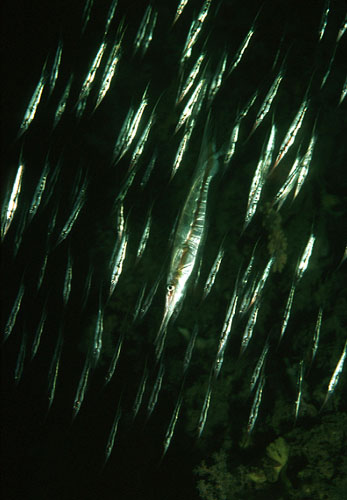| Centriscidae (Snipefishes and shrimpfishes), subfamily: Centriscinae |
| 17 cm TL (male/unsexed) |
|
reef-associated; brackish; marine; depth range 2 - 100 m |
| Indo-Pacific: Red Sea and Arabian Gulf (Ref. 11441) to New Guinea, north to southern Japan, south to New South Wales, Australia. |
|
Dorsal spines (total): 3-3; Dorsal soft rays (total): 10-12; Anal soft rays: 11-12. Silvery with reddish brown to blackish mid-lateral stripe. Main dorsal spine moderately long and without joint (Ref. 48635).
Description: Characterized by extremely thin or flattened and nearly transparent body; first dorsal spine horizontal and projecting beyond tail tip, rigid, without movable segment posteriorly; grooved interorbital (Ref. 90102). |
| Inhabits sandy or muddy floors of shallow inlet waters. Usually in large schools among branching corals, seawhip gardens and black coral bushes to about 15 m depth. Small juveniles in surface waters and sometimes in small groups along beach edges in quiet bays and settle with crinoids or urchins (Ref. 48635). Usually processed into fishmeal (Ref. 2858). |
|
Least Concern (LC); Date assessed: 25 August 2015 Ref. (130435)
|
| harmless |
Source and more info: www.fishbase.org. For personal, classroom, and other internal use only. Not for publication.
